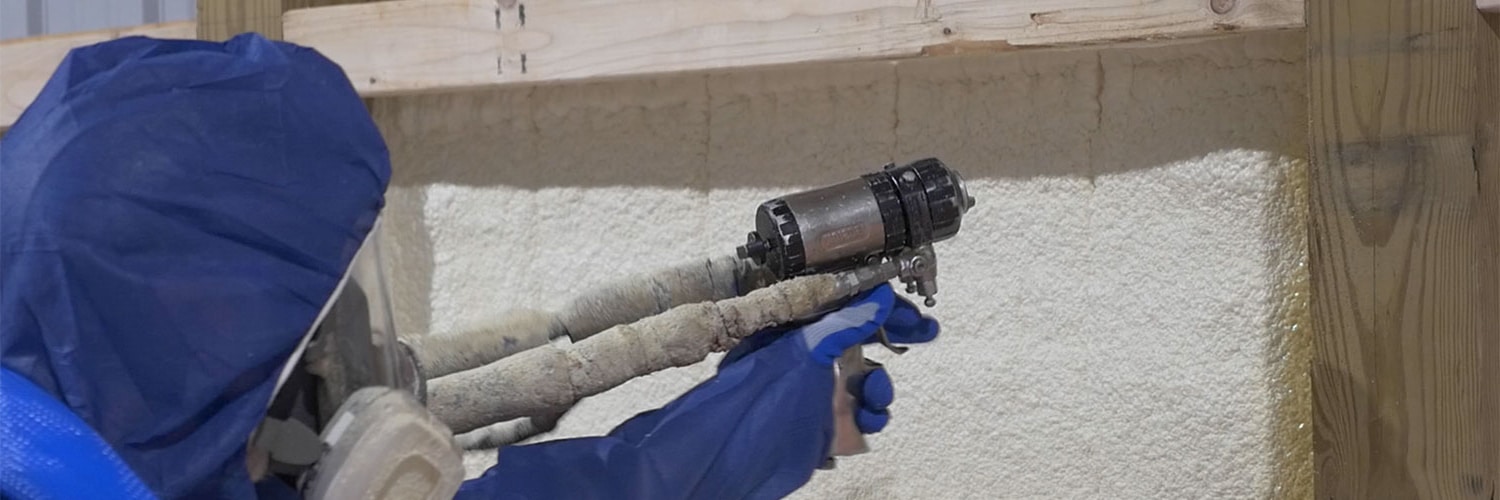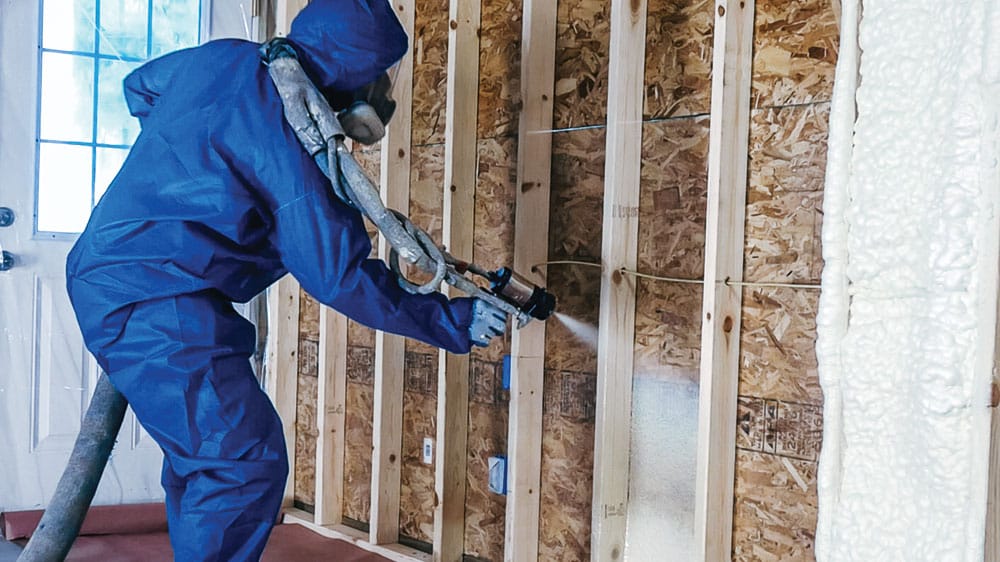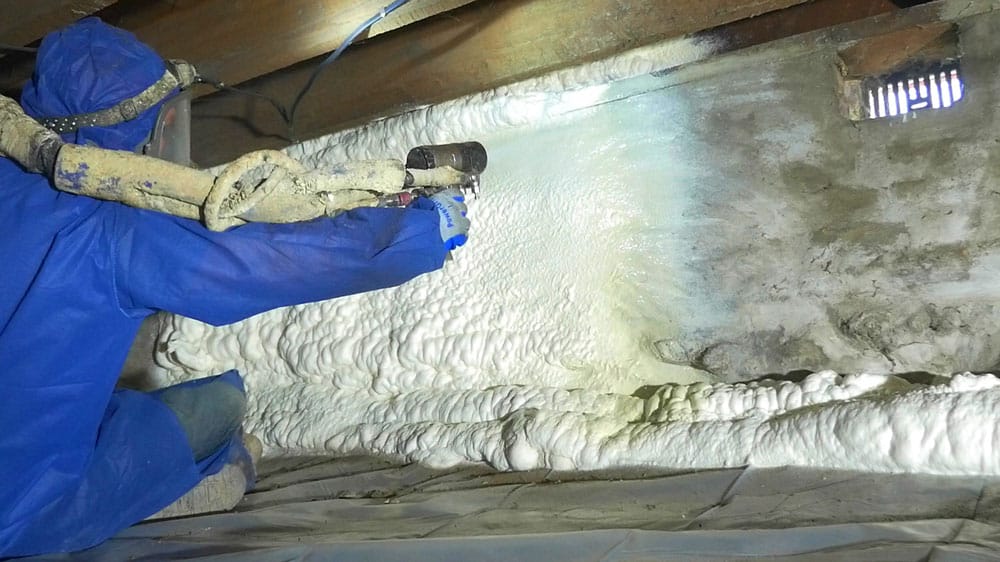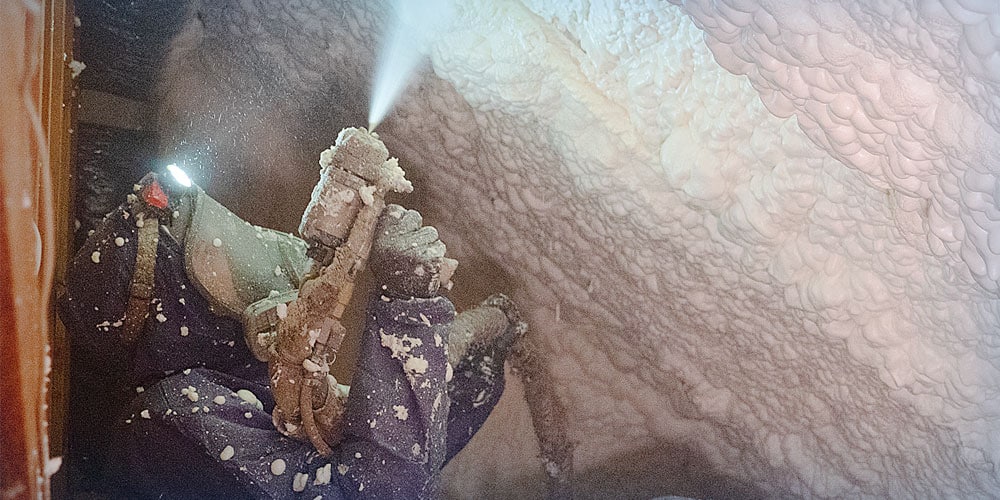So, you’ve finally built the perfect workshop, storage space, or man cave in your pole barn – congratulations!
Now comes the crucial step: finding the best insulation to make it comfortable, efficient, and durable. Insulating your pole barn properly can save you money on energy bills, regulate temperature, and even extend the life of the structure.
If you’re wondering what kind of insulation you should use for a pole barn or what the most cost-effective way to insulate a pole barn is, you’ve come to the right place. Let’s dive into the pros and cons of the most common insulation options for pole barns and why spray foam might be the best choice for your needs.
Why is Insulating a Pole Barn Important?
Pole barns are versatile structures often used for workshops, garages, storage, or even livestock housing.
However, their design can make them vulnerable to temperature swings, moisture, and energy loss. A properly insulated pole barn can experience the following perks.
- Prevents unwanted air movement.
- Controls temperature and humidity.
- Protects the structure from mold, mildew, and pests.
- Lowers heating and cooling costs.
Foam Board Insulation: Pros and Cons
Foam board insulation consists of rigid panels typically made from polystyrene, polyisocyanurate, or polyurethane.
These boards are often used for exposed walls in pole barns.
Pros
- Water-Resistant: Limits moisture buildup and reduces the risk of mildew.
- Eco-Friendly Options: Expanded polystyrene doesn’t use HCFCs in production.
- Affordable Options Available: Expanded polystyrene boards are the cheapest foam board material.
- DIY Potential: This can be installed by experienced homeowners.
Cons
- Air Sealing Challenges: Gaps between boards must be taped or caulked to prevent air leaks.
- Custom Cutting Required: Panels must be cut to fit the structure precisely.
- Vulnerability to Moisture: Some foam boards can absorb moisture over time, reducing their effectiveness.
- Cost Considerations: Slightly more expensive than traditional insulation options.
Fiberglass Insulation: Pros and Cons
Fiberglass insulation, made from fine glass fibers, is a traditional choice for pole barns.
It’s lightweight, inexpensive, and widely available.
Pros
- Affordable: One of the least expensive options for pole barn insulation.
- DIY-Friendly: Can be installed by experienced homeowners.
- Slows Air Movement: Traps hot or cold air within the material.
Cons
- Lacks Moisture Resistance: Promotes mold and mildew growth if it gets wet.
- Air Permeability: Does not prevent air from passing through the material.
- Health Risks: Can irritate skin and respiratory systems when disturbed.
- Short Lifespan: Needs to be replaced every 25 years – or sooner if it gets wet.
Spray Foam Insulation: Pros and Cons
Spray foam insulation, particularly closed cell spray foam, is an increasingly popular choice for pole barns.
It’s applied as a liquid and expands into a durable, airtight seal.
Pros
- Durability: Can withstand impacts from tools, machinery, or livestock.
- Air Seal: Creates a barrier against air leaks, keeping the pole barn weather-tight.
- Moisture Resistance: Does not retain water, preventing mold and mildew growth.
- Energy Efficiency: Reduces heating and cooling costs by maintaining consistent temperatures.
- Pest Resistance: Not a food source for pests.
- Environmentally Safe: Class One Fire Rated and non-toxic when cured.
Cons
- Higher Upfront Cost: More expensive than fiberglass or foam board.
- Requires Professional Installation: Not a DIY project due to the complexity of application.
- Potential Odor: Some spray foam brands may emit a slight odor during installation.
What is the Best Insulation for a Pole Barn?
If you’re looking for the most effective, long-lasting solution, closed cell spray foam insulation is hard to beat.
Closed cell creates an air seal, resists moisture, and reinforces the structure, making it ideal for pole barns used as workshops, garages, or storage spaces.
Fiberglass and foam board insulation have their merits, especially for budget conscious projects, however, they lack the durability and energy efficiency that spray foam provides.
The Best Way to Insulate a Pole Barn
The most cost-effective way to insulate a pole barn is to balance your budget with your insulation goals.
While fiberglass and foam board are budget-friendly options, investing in spray foam insulation can save you money in the long run by reducing energy bills and preventing costly repairs.
If you’re ready to insulate your pole barn with the best solution available, RetroFoam of Pittsburgh can help. With years of experience, we specialize in making structures energy-efficient and comfortable year-round.
Whether you’re insulating a pole barn, metal barn, or other structure, RetroFoam of Pittsburgh is here to help. Call us today at 412-228-4506 or fill out the form on our website to request your free in-home estimate.







